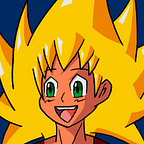Arcade Game #12: Gunblade NY
ガンブレーニューヨーク + L.A. Machineguns (L.A.マシンガンズ)
This weekend we’re talking about Gunblade NY, a light gun rail shooter developed by Sega for the Model 2 arcade machine that was released on New Year’s Eve 1995 in North America, spring 1996 in Japan, and mid-1996 in Europe. The game takes place in New York City as the players take the role of the fictional SAAF (Special Air Assault Force) as they shoot against Bear EX, a fictional robotic terrorist organization. Machineguns and Gunblade were both ported to the Wii in the two-game compilation Sega Arcade Hits Pack: Gunblade NY & L.A. Machineguns, which adds online leaderboards (no longer supported), Wii Zapper support, and the ability to unlock new firing styles with different tactical advantages. Rudy Giuliani (Republican) was the mayor of New York City at the time of the game’s release, as well as George Pataki (also Republican), who was the governor of the state of New York at the time of the game’s release.
Gunblade NY is a game in which the player must save the city of New York from robotic terrorists. The player assumes the role of a door gunner aboard a Special Air Assault Force experimental Boeing AH-64 Apache, who controls an M60 machine gun with unlimited ammunition installed on the aircraft’s left side to shoot down enemies throughout different areas of the city. The turret is aimed by pivoting a large light gun controller installed on a fulcrum (or with the Wii Remote’s infrared sensor in Sega Arcade Hits Pack). As this game is a first-person rail shooter, the player cannot control where the helicopter flies in general and must focus on destroying all enemies in its vicinity and move on to the next area, with the ability to destroy explosive objects to take out multiple foes simultaneously and deal increased damage with headshots.
Enemies can attack the turret with rocket launchers, but the player is able to shoot down the rockets to avoid incurring any damage. The player can only take three hits before being put out of action and needing to insert more coins (in the case of the Wii, pressing the A button) to continue. There are eight levels to complete, divided into two campaigns, one easy and one hard, consisting of four levels each, plus a bonus score attack mode that challenges players to score as much points as possible within a time limit. Most levels end with a boss battle against a large robotic enemy. A second player can join in at any time to assist the first player in cooperative multiplayer, controlling an additional turret installed on the right side of the helicopter, but can only withstand three hits before being put out of commission, like the first player.
The original release had billboards of real-world products (JVC, Coca-Cola, CSK (former parent company of Sega, now defunct), Olympus, Fujifilm, and Maxell, are all Japanese companies except for Coca-Cola), and the original, now-destroyed World Trade Center. Due to the destruction of the World Trade Center during the September 11 attacks, the World Trade Center towers that appear in Gunblade NY are removed in the Arcade Hits Pack to reflect their absence during the game’s setting in the year 2005 (and the billboards are replaced with either fictional or Sega-owned properties since the originals cannot be used in an attempt to avoid legal actions from said well-known companies).
L.A. Machineguns
A sequel, L.A. Machineguns: Rage of the Machines, was released in December 1998. The game is another rail shooter set 20 years after the events of Gunblade NY and follows the efforts of two agents of the fictional Special Independent Force Against Terrorism riding hoverbikes to defeat the titular Rage of the Machines, another robotic terrorist organization, across the western United States. Unlike Gunblade NY, L.A. Machineguns introduces scoring (except for the score attack in the first game, which is only performed by one player). The Las Vegas stage features a then-newly released Dreamcast game Sonic Adventure, including the then-newly released arcade game Magical Truck Adventure. The Wii re-release replaces the red crosses with red pill-like life counters (along with other video games), possibly to avoid legal actions from the ICRC.
Naoki Tokiwa and Kentaro Koyama were responsible for the sound and music for the first game. For the second game, the role went to Koyama alone. And that’s the Medium post. Come on back! A big party is waiting for you.
